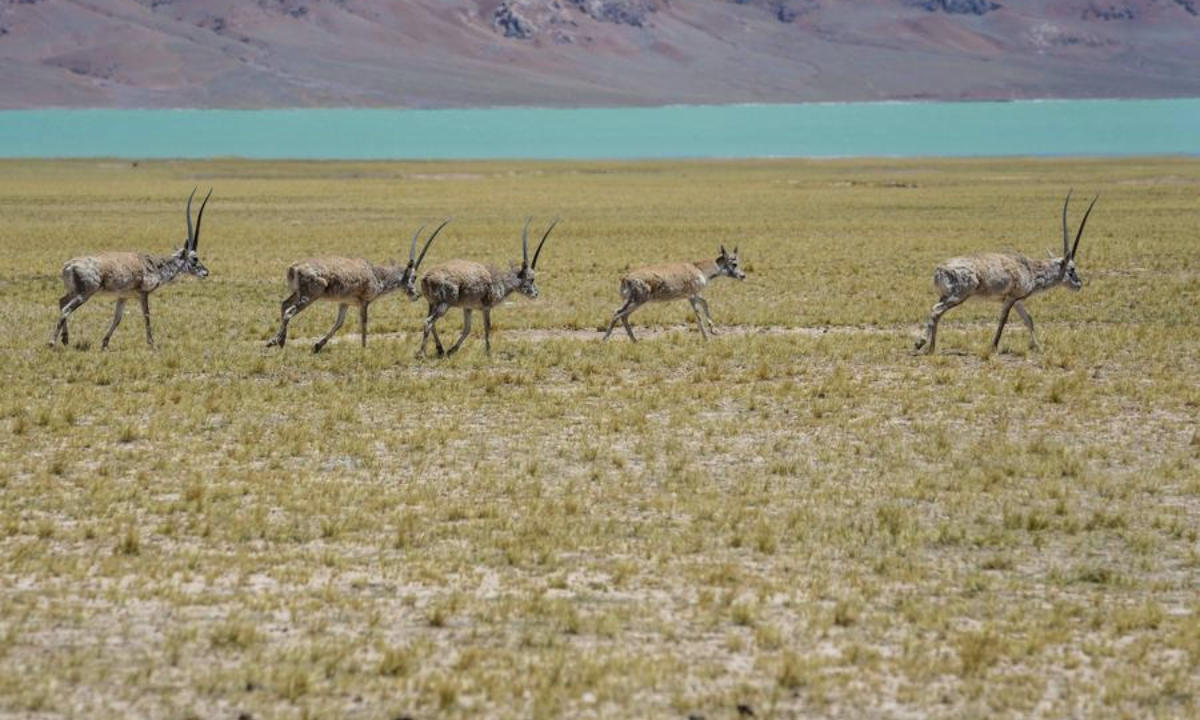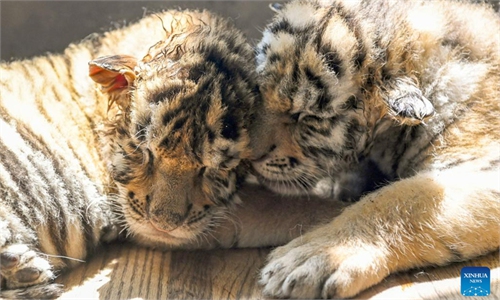China steps up efforts to restore rare wildlife, with over 70% of wild giant pandas effectively protected

Male Tibetan antelopes guard the female ones during their migration to their birth-giving ground in Qiangtang National Nature Reserve in Southwest China's Xizang Autonomous Region on June 12, 2024. Photo: Xinhua
China has made significant progress in biodiversity conservation with the increased population of rare and endangered wild animals, as over 70 percent of the wild giant panda population effectively protected and the population of the Siberian tiger, also known as the Amur tiger now exceeding 70, and the Amur leopard, also called the Far East leopard, over 80.
The populations of rare and endangered wild animals and plants in the country have steadily increased, and their habitats have steadily improved, the National Forestry and Grassland Administration (NFGA) announced on Thursday, which marks the International Day for Biological Diversity.
The theme of this year's International Day for Biological Diversity is "Harmony with nature and sustainable development."
Through the establishment of a nature reserve system centered on national parks and wildlife conservation projects, more than 200 species of rare and endangered wild animals have entered a phase of restorative growth, and over 100 endangered wild plant species received rescue protection, according to a press release obtained by the Global Times from the NFGA.
The 2024 results from the nationwide simultaneous survey on waterbirds show that the total number of wintering waterbirds in China has reached 5.06 million, the highest number ever recorded.
In recent years, China has made steady progress in wildlife conservation. The country has established national research centers for the protection of flagship species such as the giant panda, Asian elephant and crested ibis, strengthening scientific and technological support for conserving these species and their ecosystems. Rescue-oriented conservation projects have been launched for 48 critically endangered wild animal species, including in-situ protection, rescue and rehabilitation, artificial breeding and reintroduction of wild animals, promoting the growth of wild populations.
China has continued to carry out rescue-oriented conservation for 50 critically endangered wild plant species and 100 species with extremely small populations. The reintroduction of nearly 40 species of rare and endangered plants has effectively reduced extinction pressure on wild populations.
Besides, China coordinates both in-situ and ex-situ wildlife conservation and actively promotes the development of the national park and botanical garden systems.
Biodiversity in the Sanjiangyuan National Park continues to thrive, with the Tibetan antelope population rebounding from fewer than 20,000 in the late 1980s to over 70,000 today.
The Giant Panda National Park, which spans Southwest China's Sichuan Province, Northwest China's Shaanxi and Gansu provinces, has established 13 ecological corridors that connect panda populations, effectively protecting more than 70 percent of wild giant pandas.
Since its establishment, the China National Botanical Garden has added over 5,000 living plant accessions, representing 2,800 species, including 110 nationally protected species and 65 rare and endangered species. The South China National Botanical Garden has collected more than 8,500 living plant accessions, covering 4,202 species, including 285 nationally protected species and 469 rare and endangered species.
Next, the NFGA will accelerate the development of a nature reserve system centered on national parks, actively promote the introduction of a national park law, and establish new parks based on a strict, prudent review process. More efforts to combat illegal wildlife trade and comprehensively strengthen biodiversity conservation will also continue.




